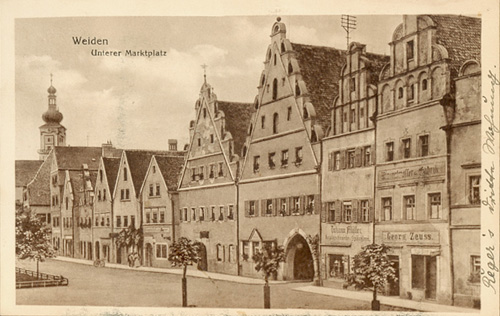1. Wiesbaden
A Piano Quintet in C minor (WoO II/9) is completed in February but rejected by Augener & Co.. Piano pieces and Bach transcriptions bremain unprinted and only appear in later years after the successful move to the Munich publishing firm of Jos. Aibl. Supported by testimonials from Ferruccio Busoni and Felix Mottl , Reger applies for kapellmeister positions in Heidelberg and Bonn, but is unsuccessful. As a result of the failures, he gets deeper and deeper into alcohol addiction. At the end of March, a lifelong artist friendship begins with concerts given by Karl Straube at the Frankfurt Paulskirche, including a performance of the Suite in E minor, Op. 16.
A first attempt by Emma Regers in March to bring her unkempt brother home to Weiden fails. Reger is given up by the parents who presume megalomania in the highest stage. His sister is successful in the second attempt: In mid-June Reger returns to the parental home. His health is badly affected by alcohol and nicotine, the ulcer on his neck has formed again and will require another surgical intervention.
2. Weiden

The isolation in Weiden inspires Reger's creative productivity. A few days after his return, he put the final note under the Waltzes, Op. 22; within a few weeks he completes the opera 23, 25 and 26 as well as the piano works WoO III/10 and III/11; he immediately starts looking for a publisher (also for his works composed in Wiesbaden). Viewed by his parents as a failed existence, Karl Straube supports him in his vocation as a composer. Already by mid-September the first chorale fantasia dedicated to the friend, on »Ein’ feste Burg ist unser Gott«, Op. 27, is completed and premiered. by Straube shortly thereafter. With it, Reger opens the series of his great organ works, with which he finds a new, personal organ style and achieves increasing success. With his second Cello Sonata in G minor, Op. 28, in which the influence of Brahms is still evident, he has little success; it is first performed only eight years later.
Richard Strauss now also puts Reger as a composer in touch with the Leipzig publishing house of Rob. Forberg (opp. 24, 26, 27 and 29) and the Munich-based Jos. Aibl Verlag, der in den Weidener which becomes Reger's main publisher during the Weiden years. Reger shows his gratitude by dedicating his Fantasia and Fugue in C minor, Op. 29, to Strauss. With his first income, Reger can gradually pay off the debts he left behind in Wiesbaden. For the first time in four years, a detailed article about Reger with a picture and a curriculum vitae is published, written by Reger's Wiesbaden friend Caesar Hochstetter, who recommends the highly talented young composer Max Reger to the publishers1. Reger expresses his gratitude by dedicating his opera 25 (Aquarellen) and 34 (Cinq Pièces pittoresques) to Hochstetter.
Postal items from this year whose sender or addressee is Max Reger.
Images from the Max Reger Foto Gallery that originate from this year and have a direct reference to Max Reger.
Reference
Max Reger Biography – 1898, in: Max-Reger-Portal, www.maxreger.info/biography/1898, Max Reger Biography Data, V. 3.2.0, last check: 27th December 2025.